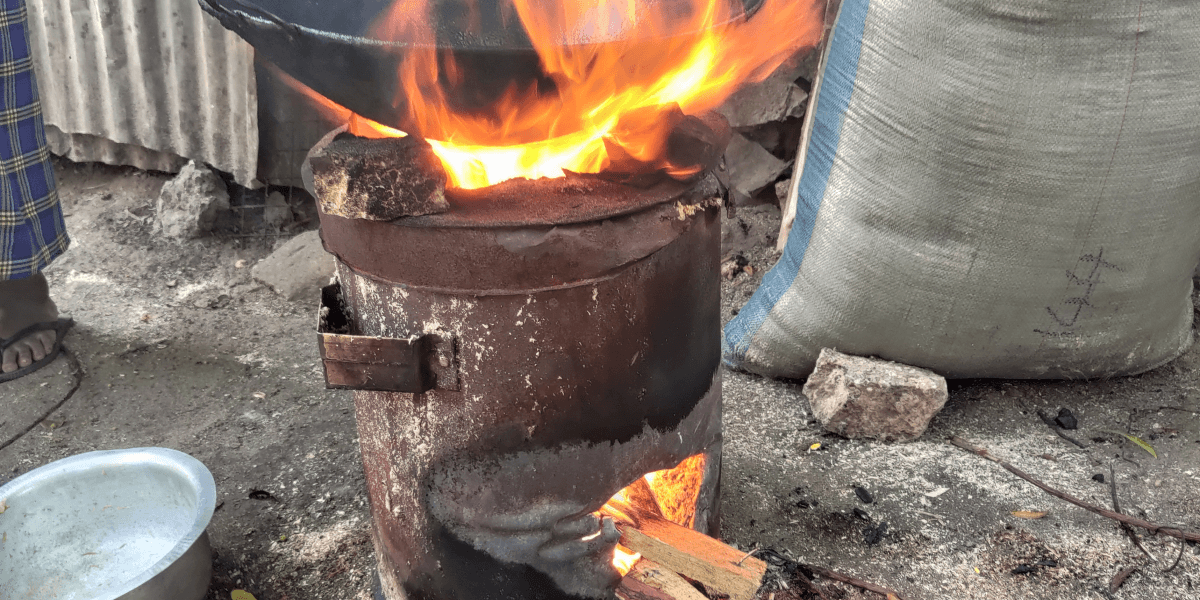Cooking using solid fuel in Tanzania. Photo: Mikkel Vindegg / CICERO
The oldest source of air pollution still prevails
Twenty-two years into the twenty-first century, the oldest source of air pollution still prevails. Despite the many policies implemented by national governments and promoted by global bodies, solid fuel remains by far the dominant fuel used for cooking in most low and middle-income countries of South Asia and Africa, while solid fuel (both biomass and coal) is used for heating in much of East and Central Europe and Northern China.
This reliance on solid fuels has significant health consequences for billions of people worldwide, as they are exposed to harmful air pollutants caused by inefficient combustion of wood, charcoal, dung cakes, crop residues, kerosene, etc. in traditional stoves in residential settings. This is denoted household air pollution and is characterized by high concentrations of PM2.5. A certain fraction of residential emissions however goes outdoors and thus also contributes to ambient PM2.5. According to a recent article in Environment International, household air pollution is in fact a dominant source of ambient PM2.5 globally.
What is PM2.5?
PM2.5 describes fine inhalable particles, with diameters that are generally 2.5 micrometers and smaller. Because of these particles' size, they can penetrate directly into the bloodstream, which makes them particularly dangerous to human health. PM2.5 emissions come from multiple sources, including industries, power plants, transportation, and forest fires.
Residential emissions contribute to about 20% of global ambient PM2.5 exposure. This fraction is responsible for 0.77 million premature deaths, which is in addition to 2.3 million deaths from direct exposure to household air pollution.
To tackle this problem, the authors state, coordinated actions are required. They suggest actions such as promoting campaigns to encourage the use of cleaner biomass cookstoves and replacing household solid fuel use with cleaner energy sources like liquified petroleum gas (LPG), ethanol, or electricity. Some countries have already made significant progress in expanding access to LPG for cooking in energy poor households, but there is a need to identify other contributors to household air pollution, including household activities like water and space heating, kerosene lighting, and animal fodder preparation. Household air pollution primarily affects the poorer segments of the world’s population, including in developed countries.
In Europe, where there is a rise in the use of wood for heating, stricter measures should be enforced to replace outdated heating appliances with efficient and low-emitting devices. To build efficient mitigation policies to reduce and replace solid fuel use in households, it is necessary to quantify emissions from multiple household activities.
Overall, the findings of the article highlight the urgent need for consistent and coordinated efforts to address air pollution caused by solid fuel use. By implementing effective policies and promoting the use of cleaner energy sources, we can protect the health and well-being of millions of people worldwide, both from the direct exposure to household air pollution as well as the exposure in ambient air that is caused by burning solid fuels.
